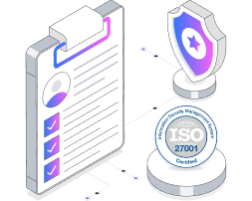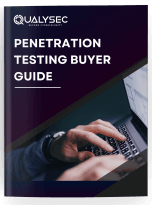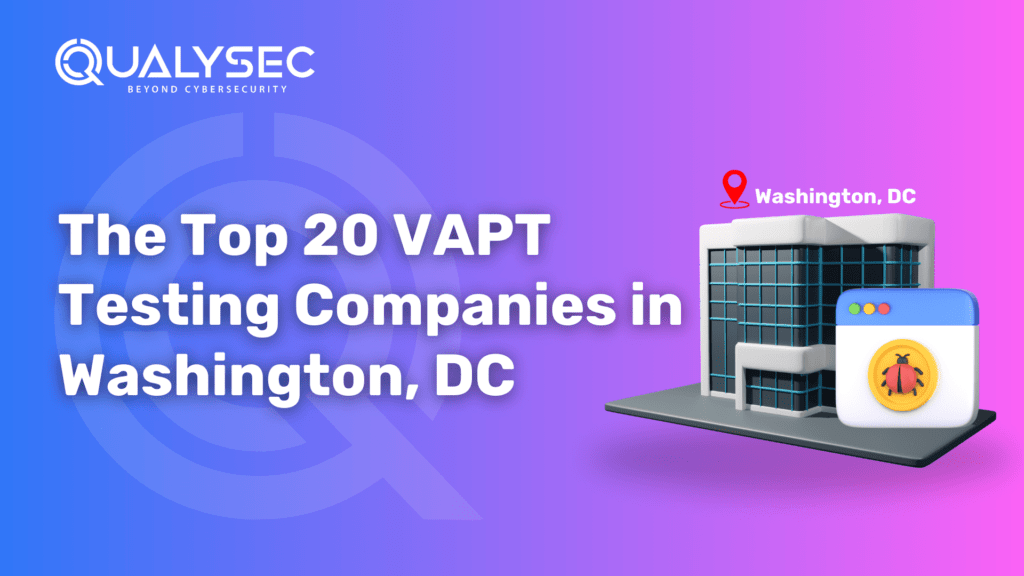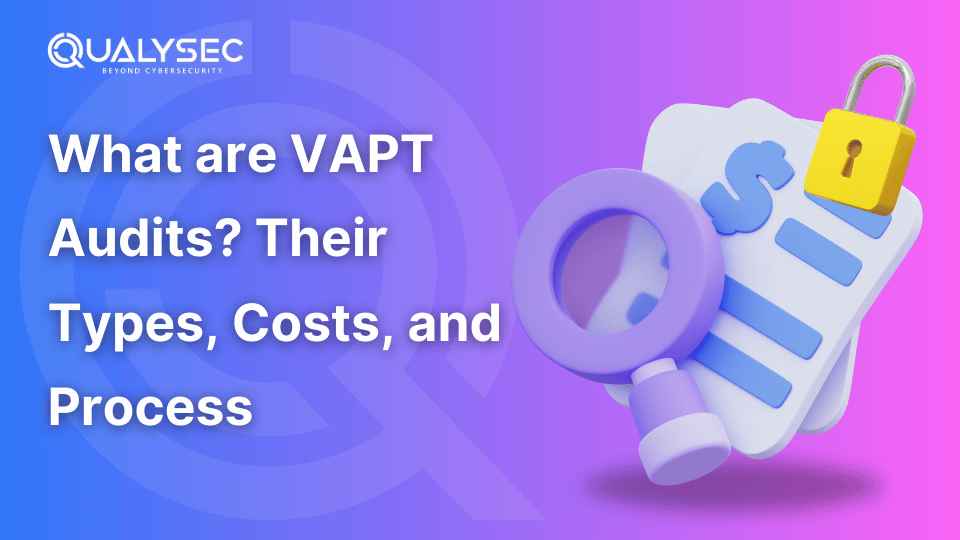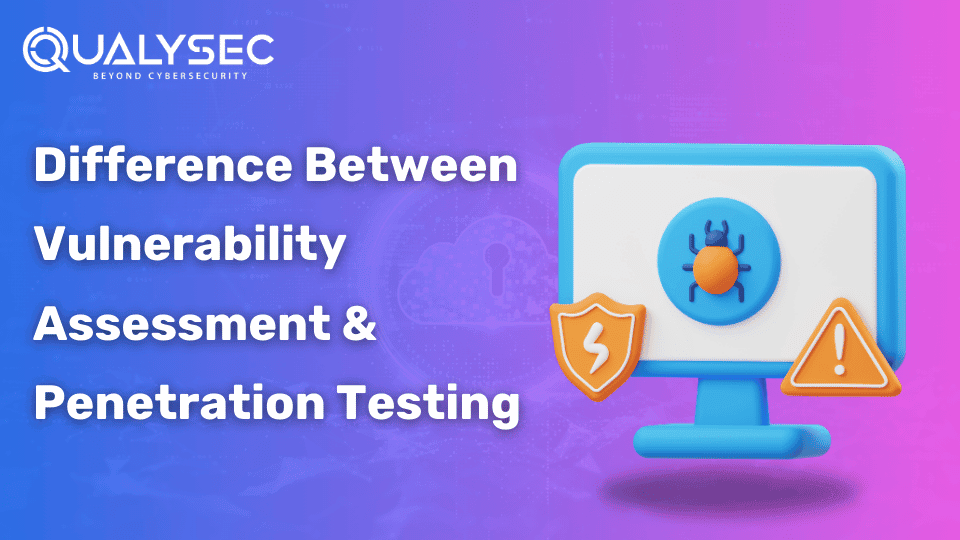The Top 20 VAPT Testing Companies in Washington, DC
Introduction: Considering cyberattacks that are projected to continue to rise, robust security protocols are essential. Vulnerability Assessment and Penetration Testing (VAPT) has grown into an avenue of protection against cyberattacks. The constant motion industry has resulted in a plethora of the best “VAPT testing companies in Washington DC,” all worthy of protecting corporations from the surge of cyber assaults. We’re going to get a glimpse into the Top VAPT powerful testing companies that are shaping Washington, DC’s virtual defense landscape. Top 20 VAPT Testing Companies in Washington, DC 1. Qualysec : Qualysec is an unparalleled protector for businesses navigating the perilous cyber landscape. With an established history of successfully safeguarding a variety of industries, it offers a ray of hope for security testing and vulnerability assessment. To safeguard significant holdings and information, experienced, highly trained safety experts help businesses uncover application vulnerabilities, evaluate hazards, and put solid safety options in place. The business is renowned for its skills in cloud safety, API protection, application development security, as well as security for apps. QualySec stands apart from various VAPT testing providers in India thanks to its scientific expertise and unwavering dedication to customer satisfaction. The business does more than just patch holes; it also customizes services to meet the unique needs of every client at a reasonable VAPT expense throughout Washington, DC. Talk to our Cybersecurity Expert to discuss your specific needs and how we can help your business. Schedule a Call 2. Usxcyber: Usxcyber is one of the renowned cyber hubs in Washington, DC, and an information technology managing partner that offers data safety solutions and VAPT network and penetration testing services. 3. SHEILD7 : SHEILD7 is a renowned cybersecurity company that provides security solutions and services, including vulnerability assessment and penetration testing vapt detection. 4. Blue Star Cyber: This company is known for its specialization in vapt audit services and regulatory and compliance solutions. 5. EN Computers: the organization is based in Washington, DC and provides services with its main focus on vulnerability assessment and security testing. 6. Envescent Cybersecurity: Envescent Cybersecurity is a cybersecurity company that provides services such as advanced penetration testing, VAPT security testing, and audit services for system security. 7. Teal tech: Teal tech is one of the renowned companies that offer VAPT service solutions according to the customers’ requirements, such as vulnerability detection and penetration testing. 8. Vigilant LLC: Vigilant LLC is a VAPT testing company that provides consulting services and solutions such as vulnerability detection and penetration testing. 9. Vaultes Digital Studio: Vaultes Digital Studio is a cybersecurity firm that provides comprehensive security services, including VAPT assessment and penetration testing 10. Washington DC Computer Forensics: It’s a company that is established in Washington DC, and Specialises in the field of computer forensics and connected safety solutions. 11. Iron Range Cyber: Iron Range Cyber is a cybersecurity hub that allows it to offer security solutions, such as VAPT toolsvapt regulatory and security services. 12. Wilson Consulting Group: This organization provides information security management, vulnerability management, and regulatory solutions as a consultant system. 13. Redpoint Cybersecurity: A cybersecurity company based in Washington. It specializes in vulnerability and penetration testing and services cybersecurity consultations. 14. UnderDefense: the enterprise is based on offering VAPT services and incident response services on the cybersecurity front in Washington, DC 15. B/Net System: a cybersecurity Infrastructure that provides services related to information technology, cybersecurity solutions for all business sizes, irrespective of industry, and a security system for VAPT. 16. IronNet Cybersecurity: IronNet Cybersecurity is an organization that mainly focuses on updated security protocols and cyber threat intelligence, such as vulnerability detection and penetration testing. 17. Cyberspace solutions: The company is established in Washington, and it offers management safety solutions, vulnerability management, and penetration testing with integration controls. 18. EmberSec: EmberSec is a cybersecurity company that provides and supports cybersecurity solutions that are designed to protect businesses against cyberattacks. It is also a vapt service provider like vulnerability detection and penetration testing. 19. MCGlovalTech: MCGlovalTech is an organization that provides cyber security services and management and regulatory support and consultancy. 20. Coalfire: A renowned infrastructure that allows companies and businesses to secure their business future with advanced technologies and services like vulnerability management and penetration testing. Latest Penetration Testing Report Download Conclusion: The above-mentioned companies are the pioneers in the cybersecurity industry to proven VAPT solutions in Washington, DC. The reality is that vulnerability and security testing are crucial. Significant amounts of assets have been lost as a consequence of the hazards that were discovered. Criminals seek companies with common vulnerabilities and exploit them as potential routes of entry. Therefore, VAPT must be given top priority, and the organization must find a top protection investigator with the most reasonable “VAPT expense in Washington DC” right away as conceivable.

